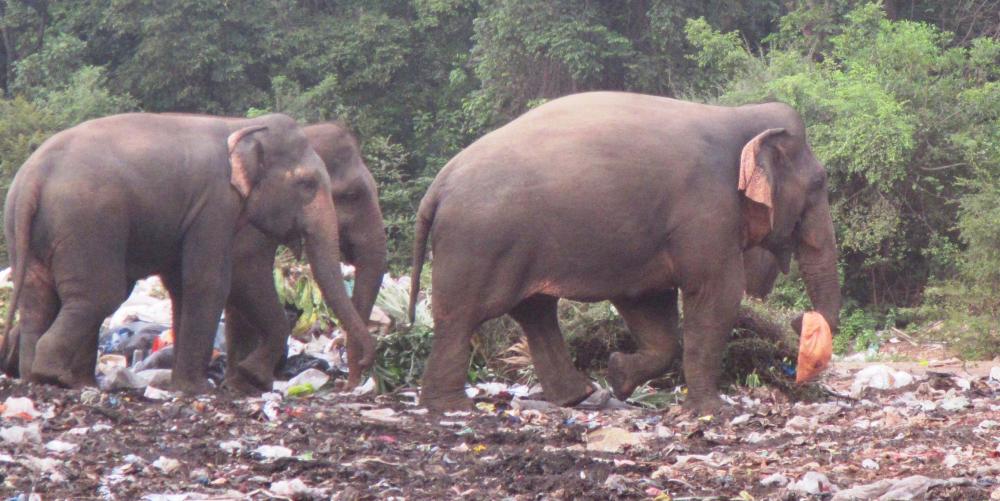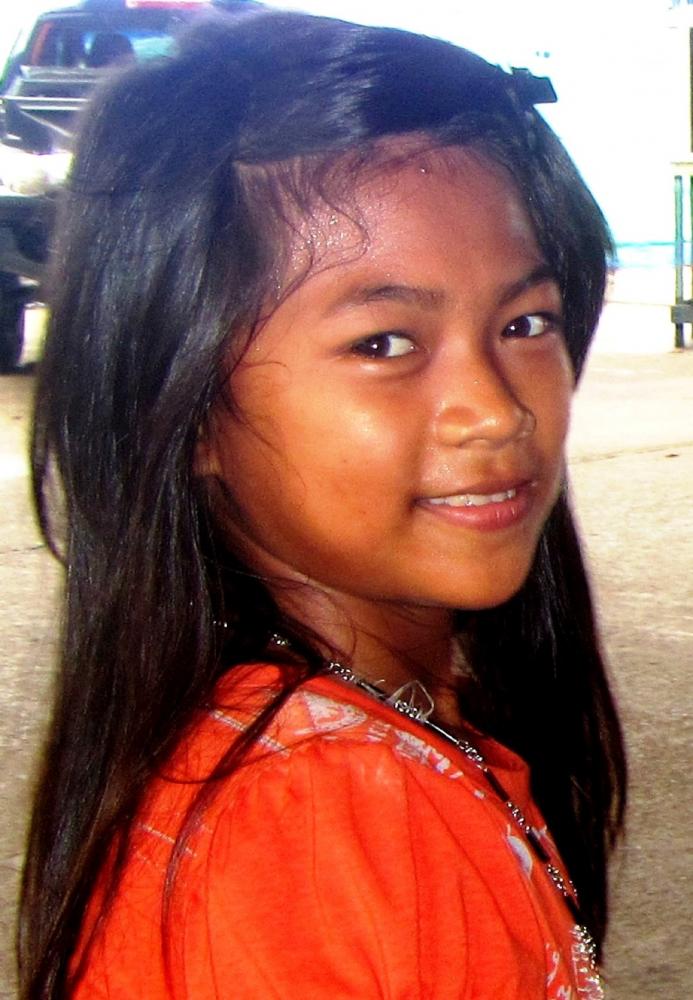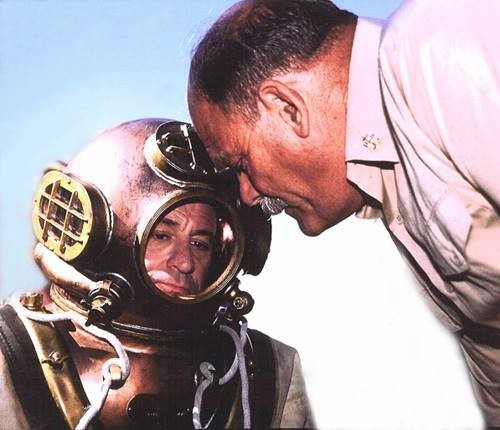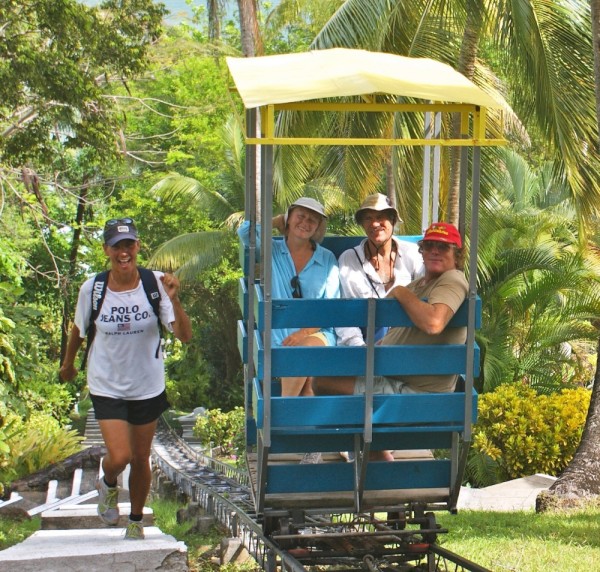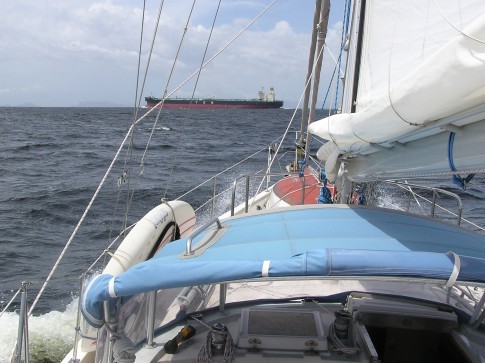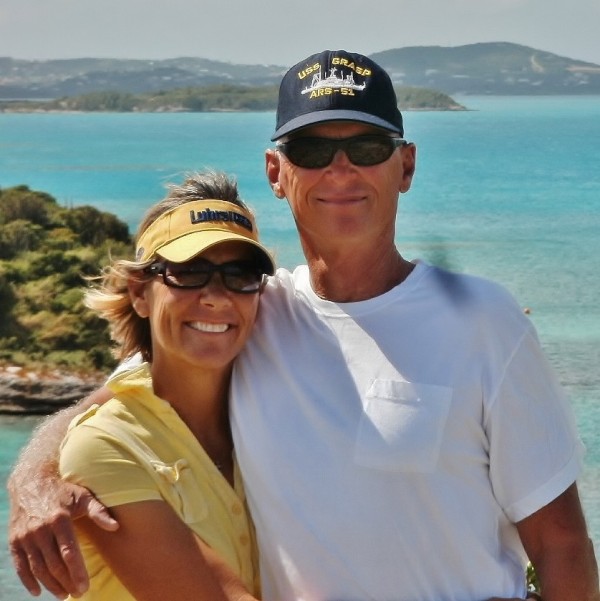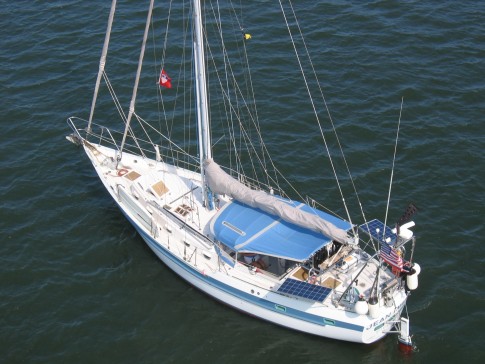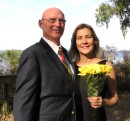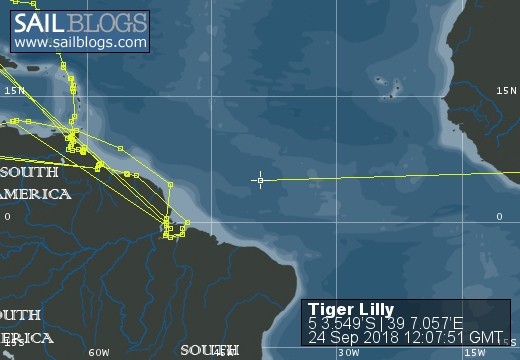
S/V Tiger Lilly
Rig heavy, reef early, and pray often; for God does not assure us an easy passage, but He does promise a safe anchorage...
25 May 2018 | TRINCOMALEE, SRI LANKA
02 January 2018 | Clan Jeti Anchorage, Georgetown, Penang Island, Malaysia
03 November 2016 | Singapore, Southeast Asia
02 October 2016 | Kumai River, Borneo
24 August 2016 | Rindja Island, Indonesia
22 July 2016 | Fannie Bay, Darwin, Northern Territory, Australia
14 June 2016 | Pancake Creek, Queensland, Australia
13 June 2016 | Pancake Creek, Queensland, Australia
11 June 2016 | Burnette Heads, Queensland, Australia
07 June 2016 | Mooloolaba, Queensland, Australia
11 May 2016 | Colmsie, Brisbane River, Queensland, Australia
23 December 2015 | Brisbane, Australia
13 August 2015 | Whangarei, New Zealand
07 August 2015 | Whangarei, New Zealand
23 July 2015 | Whangarei, New Zealand
12 April 2015 | Whangarei, New Zealand
11 February 2015 | Whangarei, New Zealand
25 January 2015 | Whangarei, New Zealand
24 September 2014 | BORA BORA, French Polynesia
23 September 2014 | Bora Bora
TIGER LILLY - GUYANA CRUISING NOTES - PART THREE
17 May 2013 | Sophia Point, Essequibo River, Guyana
Tom & Lilly
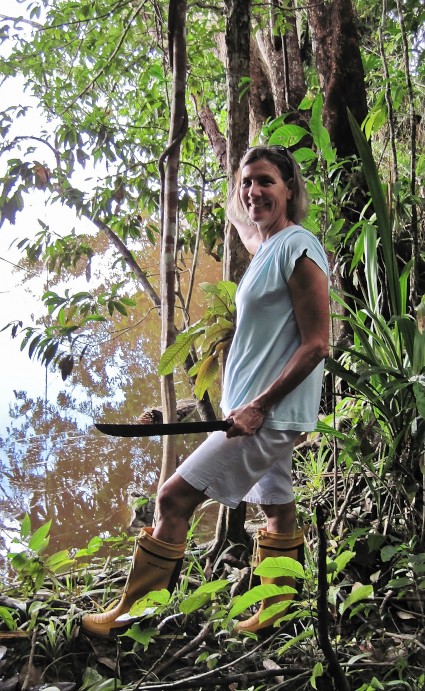
BAGANARA RESORT
The track from Bartica south to Baganara Island is pretty straight forward, with one notable exception - and that would be Do It Rock (06-22.280N 058-36.614W) which lies right along the path of the Doyle's Guide waypoints. While we were in Trinidad we visited Angus and Ruth aboard S/V Do It and they gave us a heads-up regarding this submerged hazard to navigation. It seems they were happily motoring down the Doyle waypoints between Bartica and Baganara Island when they came to an abrupt stop (and actually put a pretty good dent in their keel). We recommend clearing this isolated rock by steering well to the west (about a quarter mile, in about 30 feet of water), and then getting back on the waypoint track. About 4 miles south of Bartica, is the Baganara Resort, a first-class, professionally operated, and fully staffed resort which has been created around the warmth of an old family estate, and the stunning tropical vistas provided by the Mighty Essequibo. The staff of this first class facility welcomes the international yachting community, and the Baganara Resort was the jewel of Guyana for us. As we walked across the immaculate grounds and up the steps to the freshly painted main club-house we were personally welcomed by the gregarious manager Kurt Jordan with a broad smile and a complimentary lime squash from the bar. Concerned that perhaps he mistook us for the resort's typical deep-pocketed eco tourists who fly into the resort's private air strip, we sat down and explained to him just who the typical mom and pop retired-on-a-budget cruiser couple was, and wasn't. This was not Kurt's first rodeo, he had been trained in the service industry in the US - and it certainly showed. He told us we were most welcome to anchor off his hotel, he gave us the password to the Wi-Fi (pw: dreamresort), and told us his facilities were open to us. Kurt told us that the typical international sailboat cruiser actually adds interest to his facility, and an added dimension for his guests to enjoy; he thinks that yachts anchored off the island's immaculately groomed sand beach add to the ambiance of the resort. Isn't that amazing - a business-man who doesn't look at the cruising community as a heard of cash-cows to be fleeced! (Lilly sez: Tom-Tom it is not good form to mix your metaphors.) Almost as if on cue, a young enthusiastic couple returned to the hotel from a private river rapids tour in a jet boat and wanted to talk with us about living aboard Tiger Lilly and sailing the world's oceans. Of course, Mr. Captain Tom regaled them with stories of the briny-blue, while Lilly went into her mother-hen mode and encouraged the honeymooners in their new marriage. Kurt said that he really enjoys watching families with young children experience the wonders of Baganara Island and the river. After an encounter with the animals and plants of the rainforest in a genuine natural setting the kids don't want to leave. The prince of the Guyana jungle is a real jaguar, not a sanitized cartoon character - and Disney World will never be the same for kids who have experienced the real thing. The Baganara Resort was far-and-away the best anchorage we visited on the Essequibo. We put our anchor down in 22 feet of water (with good holding) right in front of the resort steps, and just outside the roped-off swimming area. When maneuvering to anchorage stay well north of the head of the island as there is a rock reef and shallows extending east into the river from the south end of the island. The prevailing winds and the thunder squalls on the Essequibo usually come from the east, so as we swung from bow-to-current to head-to-wind at slack water, or were set back on the anchor chain in a squall, it was always out into the deep water of the river and away from the shore. (This positive characteristic of an east bank anchorage is actually the detriment of a west bank anchorage which will swing a boat into the shore and shallow water - particularly in a brisk easterly at low-slack or during a strong thunder squall at low-slack.) We landed our dinghy "Grace" on the beach where the water taxies land, adjacent to the kayak rack - there is a large flat rock on the beach with a line tied to it to moor your dink. Kurt told us that we were free to roam the premises, with only two exceptions: stay off the airfield; and if there is a large group of corporate folks holding a conference, first check with him, as sometimes proprietary information is discussed at these meetings and security is an issue. Speaking of security, personal safety is of course important when operating an airfield - it would ruin your whole day to walk into a turning propeller, so the air strip is off limits to visitors. Gold is the wealth of this district of Guyana, and the most secure way to move it is by private aircraft. One afternoon we thought that the Prime Minister was coming to the resort because there were several khaki-clad, automatic weapon toting, serious-looking big fellows standing on the beach. A twin-engine air craft landed on the grass air strip, and almost simultaneously a fast water taxi pulled up to the beach - with a crew of similarly equipped guards. We thought that we were about to see somebody very important - but we were disappointed when all this fuss was apparently for a small parcel. Later we learned that that parcel was very likely a shipment of recently mined gold. A word to the wise - stay away from the air strip when ashore! We asked Kurt about tours inland or up the river and he told us that the Baganara Resort was owned by a family of Guyanese companies which included an airline, a tour company, and a river excursion company. Since most of the inland tours involve air travel, and many of the river tours start from the Baganara Resort, this is probably the best (and most economical) place to take a tour - check with Kurt for booking arrangements and current pricing. Additionally, the Baganara Island anchorage is the safest and most secure place we saw on the Essequibo to leave your boat. If you cannot get another yachtie to watch your boat while you are touring (we think that is the best solution), then Kurt can make arrangements to have your boat monitored. The food served in the resort's open-air dining room is excellent and is offered at a fair price. The restaurant has a wonderful view of the river (and of course, your boat) - and is a good place to take your favorite First-mate to dinner. If you are considering having guests meet you in Guyana, the Baganara Resort would be an easy place to rendezvous. Bartica is within sight of the Baganara Island anchorage, and a fast RIB with a good reliable outboard could make a supply run to town easily and quickly. Just under a mile south of the resort anchorage is Sophia Point, and home of a most interesting cruising couple - Bernhard and Sharmilla of the S/V Meerstern.
BERNHARD and SHARMILLA
Over twenty years ago Bernhard, a German single-handed yachtsman, was running southeast from Grenada to avoid a West Indian hurricane aboard his home-built aluminium cutter S/V Meerstern. Once the cyclone had cleared his position to the north he decided to carry on south to Guyana, to see what he could see; and this mild-mannered retired university botany professor became one of the very first cruising sailors to visit Guyana. Captain Bernhard has the spirit of an explorer, and his shoal draft cutter not only crosses oceans, but with its twin keels and ability to sit up and dry-out is perfectly suited to navigate uncharted tidal waters and tropical rivers. Doctor Bernhard's knowledge of the natural world is truly encyclopedic, and his formidable academic credentials are augmented by a large dose of common sense, and the ability to create things with his hands. For many years Bernhard explored the tropical rivers of the northeast coast of South America during the hurricane season, and then sailed back north to the Caribbean for the winter sailing season - we have yet to meet anyone who knows more about these waters. As are most single-handers, Bernhard was in need of some serious adult supervision, and one year, as he was exploring Guyana's remote Berbice River, he met an East Indian Princess named Sharmilla. This savvy young woman, would certainly not be going to a disco with some forward German yachtsman - she had been warned of such things by her Auntie. But she sensed something intriguing about this sprightly fellow, and invited him to instead have a cup of coffee at a road-side snackette. Her bubbling personality and enchanting smile won him over, and convinced the German sailor that this was the lady for him. That cup of coffee changed everything, and a daughter of modest means (her daddy is to this day a cane cutter on a sugar plantation) was about to take a ride that makes Cinderella's pumpkin story pale by comparison. After some serious wooing on Bernhard's part, this bright, intelligent woman took him to her parents and asked if they could be married. The rest of the story is, as they say, history. Bernhard and Sharmilla were married, then boarded S/V Meerstern (which is German for "star of the sea") and immediately set off on a voyage around the world. After living aboard for 11 years and with their circumnavigation completed, Sharmilla wanted a house, and Bernhard wanted to pursue his passion with orchids. (Okay, his OTHER passion.) But they were not really ready to swallow the anchor, and wanted to keep S/V Meerstern in their lives. They returned to northeast South America and looked for a place to settle down: after searching the tropical rivers of Guyana, they found Sophia Point on the east bank of the Essequibo River just south of Baganara Island. This enterprising couple anchored S/V Meerstern off their 40 acre plot and began to push back the jungle so they could build their dream home. Today, the open and airy hexagon-shaped house which they built looks out over the tropical gardens they have created together, and S/V Meerstern sits patiently at her dock - waiting for next year's sail north to the Eastern Caribbean. Their home is set up quite similar to a yacht: access is only by boat, their electricity comes from solar panels, they catch and store thousands of gallons of rain water, and their refrigeration system came off Meerstern - they live independently, and quite comfortably, off the grid. Less than a mile to the south of Baganara Island, Sophia Point is clearly in view from the Baganara Resort anchorage, and S/V Meerstern's mast is easy to spot along the east bank against the dense jungle green. When leaving Baganara Island, first sail west into the center of the river to give the rock reef on the south end of the Baganara Island a wide berth (once in 25-30 feet you are well clear), and then lay a direct course for Sophia Point. There is another rock reef and shallows which extend from Sophia Point west into the river, just above (south) of S/V Meerstern's dock. A white plastic jug marks the middle of this reef. We put our anchor down west of the dock, and had plenty of clearance off the reef (we anchored at 06-19.443N 058-35.211W). We had a grand time visiting with these interesting people, and as fellow sailors and circumnavigators, we enjoyed talking about the ports we have visited all over the world. Bernhard took us on a hike along some of the trails he cut through the rain forest on their property - which was actually our only chance to get right into the jungle of Guyana. It was both educational and fun walking with the Professor, cutlass in hand, and hearing his description and explanation of the intricacies of life in a tropical rain forest. (Lilly sez: I'll bet ALL the young co-ed students in his university classes ADORED this man!) At the time we were reading "River of Doubt" by Candice Millard - a past editor at the National Geographic Magazine. This well-written, meticulously researched, book is the account of the exploration of a then-unknown tributary of the southern Amazon Basin in Brazil, just after the turn of the Twentieth Century. The little-known expedition was co-led by none-other than President Theodore Roosevelt himself. This fascinating description of the mysteries of the tropical rain forest, the endurance of hardship through courageous leadership, and the dynamics of the Age of Exploration, was hard to put down. (Most everyone's Kindle would profit from the addition of "River of Doubt". Tom sez: Not a bad piece of non-fiction, considering it was written by a chick.) Being with Bernhard in the rain forest at Sophia Point, and having just spent a month exploring some 350 miles of the Rio Orinoco Delta, really brought this story alive for us. "Hey Bernhard, are there any snakes in this forest?" "Yes Tom, there are some, but they usually move away quickly when they hear us coming." "Usually, Bernhard?" (That is, of course, with the exception of the Fer de Lance Bernhard found in the shower one night when he got up to pee, which stayed right there waiting for him.) Bernhard and Sharmilla are creating a nature preserve at Sophia Point which they hope will live on and conserve the natural environment and beauty of the Essequibo. Most all of the plants and animals who call this place their home are protected by these kind souls. Except of course that Fer de Lance who set up housekeeping in the shower, or his cousin who decided he liked to sun himself on the rail of the verandah, and almost got Sharmilla - those boys are gone. It was captivating to hear Bernhard describe his childhood in Germany during World War II. The stories of him and his buddies playing with explosives when the Germans abandoned their heavy weapons, and then his family nearly starving to death in post-war Germany were touching - how did this brave boy survive? Lilly and Bernhard had a grand time making genuine German sour-dough bread together, and we went back to the boat with a jar of Bernhard's starter dough - now the genesis of our daily bread aboard Tiger Lilly. A walk through the well-tended gardens they have created at Sophia Point was a special experience for us - and oh how Bernhard loves his world-wide collection of orchids. Sharmilla is the farmer's daughter, and she sows and reaps for the dinner table - of which we were privileged to partake. There is nothing finer than sitting on the veranda at Sophia Point, eating Sharmilla's tasty banana chips in the cool tropical evening, and watching the sun set on the Mighty Essequibo. One of the great pleasures of cruising is meeting extraordinary people; and our lives have certainly been blessed by the friendship of Bernhard and Sharmilla - they were our most unforgettable characters in Guyana. We hope that someday you will get the opportunity to meet them too.
JOYCE DAVIS
Along the west bank of the Essequibo River, north of Bartica and west of Kaow Island, lives an interesting American ex-pat - Joyce Davis. Joyce was one of the first black women to break the glass ceiling and color barrier of corporate America; and her husband David was a well known and successful television and movie producer. She and David cruised the Caribbean for 18 years aboard their sailboat Mood Indigo. They were popular throughout the Cruising Fleet, known for their international musical diplomacy. Their ensemble, Mood Indigo, performed classical Jazz for audiences throughout the Caribbean region. We knew of Joyce through our British friend Tony Gregory - Mood Indigo's bass player, and even though we had never met, she greeted us like long-lost friends. (Tony is an unforgettable character, an amazing single-handed ocean sailor, a self-taught musician, and now well into his 70's he is outfitting a canal boat in England for exploring Europe. He is featured in a February 2011 Blog we posted on this site - so check it out!) Joyce and David decided to retire to Guyana and built a riverfront home just south of the Hurakabra Resort. Sadly, just after the house was built, David passed away, and within the last year S/V Mood Indigo sunk at her mooring in front of the house. However, the inimitable, energetic, and outgoing Joyce carries on - and she is quite the character to be sure. Joyce graciously welcomes visiting yachties to stop by and lime, or perhaps use her spacious patio for a pot-luck supper. We enjoyed her gracious hospitality, and she told us to pass the word to visiting yachties to stop by and say, "Hello". We talked with the Hurakabra Resort manager Mike, and he gave us the following pilot instructions for sailing from Bartica to the west bank of the Essequibo west of Kaow Island;
a) Depart Bartica about 1 hour before high water. Proceed northeast of Longden Rock to approximate position 06-25.16N 058-36.92W
b) Head southwest of Kawo Island to approximate position 06-25-43N 058-37.84W (watch your set and drift in the cross-current).
c) Follow the west shore of Kaow Island north, good water is towards the shore of Kaow Island. (Kaow Island has a deserted saw mill in the southwest corner, and a troubled past as an illegal drug trans-shipment point.)
d) At the foot of Kaow Island (north end) cross the bar which runs parallel to Kawo Island's west shore. Cross the bar on a northwest heading. With a 6 foot tide, we saw 10 feet of water on this bar.
e) Run south along the west bank of the river towards Joyce's home (the first house you come to). We anchored just north of the wreck.
The track from Bartica south to Baganara Island is pretty straight forward, with one notable exception - and that would be Do It Rock (06-22.280N 058-36.614W) which lies right along the path of the Doyle's Guide waypoints. While we were in Trinidad we visited Angus and Ruth aboard S/V Do It and they gave us a heads-up regarding this submerged hazard to navigation. It seems they were happily motoring down the Doyle waypoints between Bartica and Baganara Island when they came to an abrupt stop (and actually put a pretty good dent in their keel). We recommend clearing this isolated rock by steering well to the west (about a quarter mile, in about 30 feet of water), and then getting back on the waypoint track. About 4 miles south of Bartica, is the Baganara Resort, a first-class, professionally operated, and fully staffed resort which has been created around the warmth of an old family estate, and the stunning tropical vistas provided by the Mighty Essequibo. The staff of this first class facility welcomes the international yachting community, and the Baganara Resort was the jewel of Guyana for us. As we walked across the immaculate grounds and up the steps to the freshly painted main club-house we were personally welcomed by the gregarious manager Kurt Jordan with a broad smile and a complimentary lime squash from the bar. Concerned that perhaps he mistook us for the resort's typical deep-pocketed eco tourists who fly into the resort's private air strip, we sat down and explained to him just who the typical mom and pop retired-on-a-budget cruiser couple was, and wasn't. This was not Kurt's first rodeo, he had been trained in the service industry in the US - and it certainly showed. He told us we were most welcome to anchor off his hotel, he gave us the password to the Wi-Fi (pw: dreamresort), and told us his facilities were open to us. Kurt told us that the typical international sailboat cruiser actually adds interest to his facility, and an added dimension for his guests to enjoy; he thinks that yachts anchored off the island's immaculately groomed sand beach add to the ambiance of the resort. Isn't that amazing - a business-man who doesn't look at the cruising community as a heard of cash-cows to be fleeced! (Lilly sez: Tom-Tom it is not good form to mix your metaphors.) Almost as if on cue, a young enthusiastic couple returned to the hotel from a private river rapids tour in a jet boat and wanted to talk with us about living aboard Tiger Lilly and sailing the world's oceans. Of course, Mr. Captain Tom regaled them with stories of the briny-blue, while Lilly went into her mother-hen mode and encouraged the honeymooners in their new marriage. Kurt said that he really enjoys watching families with young children experience the wonders of Baganara Island and the river. After an encounter with the animals and plants of the rainforest in a genuine natural setting the kids don't want to leave. The prince of the Guyana jungle is a real jaguar, not a sanitized cartoon character - and Disney World will never be the same for kids who have experienced the real thing. The Baganara Resort was far-and-away the best anchorage we visited on the Essequibo. We put our anchor down in 22 feet of water (with good holding) right in front of the resort steps, and just outside the roped-off swimming area. When maneuvering to anchorage stay well north of the head of the island as there is a rock reef and shallows extending east into the river from the south end of the island. The prevailing winds and the thunder squalls on the Essequibo usually come from the east, so as we swung from bow-to-current to head-to-wind at slack water, or were set back on the anchor chain in a squall, it was always out into the deep water of the river and away from the shore. (This positive characteristic of an east bank anchorage is actually the detriment of a west bank anchorage which will swing a boat into the shore and shallow water - particularly in a brisk easterly at low-slack or during a strong thunder squall at low-slack.) We landed our dinghy "Grace" on the beach where the water taxies land, adjacent to the kayak rack - there is a large flat rock on the beach with a line tied to it to moor your dink. Kurt told us that we were free to roam the premises, with only two exceptions: stay off the airfield; and if there is a large group of corporate folks holding a conference, first check with him, as sometimes proprietary information is discussed at these meetings and security is an issue. Speaking of security, personal safety is of course important when operating an airfield - it would ruin your whole day to walk into a turning propeller, so the air strip is off limits to visitors. Gold is the wealth of this district of Guyana, and the most secure way to move it is by private aircraft. One afternoon we thought that the Prime Minister was coming to the resort because there were several khaki-clad, automatic weapon toting, serious-looking big fellows standing on the beach. A twin-engine air craft landed on the grass air strip, and almost simultaneously a fast water taxi pulled up to the beach - with a crew of similarly equipped guards. We thought that we were about to see somebody very important - but we were disappointed when all this fuss was apparently for a small parcel. Later we learned that that parcel was very likely a shipment of recently mined gold. A word to the wise - stay away from the air strip when ashore! We asked Kurt about tours inland or up the river and he told us that the Baganara Resort was owned by a family of Guyanese companies which included an airline, a tour company, and a river excursion company. Since most of the inland tours involve air travel, and many of the river tours start from the Baganara Resort, this is probably the best (and most economical) place to take a tour - check with Kurt for booking arrangements and current pricing. Additionally, the Baganara Island anchorage is the safest and most secure place we saw on the Essequibo to leave your boat. If you cannot get another yachtie to watch your boat while you are touring (we think that is the best solution), then Kurt can make arrangements to have your boat monitored. The food served in the resort's open-air dining room is excellent and is offered at a fair price. The restaurant has a wonderful view of the river (and of course, your boat) - and is a good place to take your favorite First-mate to dinner. If you are considering having guests meet you in Guyana, the Baganara Resort would be an easy place to rendezvous. Bartica is within sight of the Baganara Island anchorage, and a fast RIB with a good reliable outboard could make a supply run to town easily and quickly. Just under a mile south of the resort anchorage is Sophia Point, and home of a most interesting cruising couple - Bernhard and Sharmilla of the S/V Meerstern.
BERNHARD and SHARMILLA
Over twenty years ago Bernhard, a German single-handed yachtsman, was running southeast from Grenada to avoid a West Indian hurricane aboard his home-built aluminium cutter S/V Meerstern. Once the cyclone had cleared his position to the north he decided to carry on south to Guyana, to see what he could see; and this mild-mannered retired university botany professor became one of the very first cruising sailors to visit Guyana. Captain Bernhard has the spirit of an explorer, and his shoal draft cutter not only crosses oceans, but with its twin keels and ability to sit up and dry-out is perfectly suited to navigate uncharted tidal waters and tropical rivers. Doctor Bernhard's knowledge of the natural world is truly encyclopedic, and his formidable academic credentials are augmented by a large dose of common sense, and the ability to create things with his hands. For many years Bernhard explored the tropical rivers of the northeast coast of South America during the hurricane season, and then sailed back north to the Caribbean for the winter sailing season - we have yet to meet anyone who knows more about these waters. As are most single-handers, Bernhard was in need of some serious adult supervision, and one year, as he was exploring Guyana's remote Berbice River, he met an East Indian Princess named Sharmilla. This savvy young woman, would certainly not be going to a disco with some forward German yachtsman - she had been warned of such things by her Auntie. But she sensed something intriguing about this sprightly fellow, and invited him to instead have a cup of coffee at a road-side snackette. Her bubbling personality and enchanting smile won him over, and convinced the German sailor that this was the lady for him. That cup of coffee changed everything, and a daughter of modest means (her daddy is to this day a cane cutter on a sugar plantation) was about to take a ride that makes Cinderella's pumpkin story pale by comparison. After some serious wooing on Bernhard's part, this bright, intelligent woman took him to her parents and asked if they could be married. The rest of the story is, as they say, history. Bernhard and Sharmilla were married, then boarded S/V Meerstern (which is German for "star of the sea") and immediately set off on a voyage around the world. After living aboard for 11 years and with their circumnavigation completed, Sharmilla wanted a house, and Bernhard wanted to pursue his passion with orchids. (Okay, his OTHER passion.) But they were not really ready to swallow the anchor, and wanted to keep S/V Meerstern in their lives. They returned to northeast South America and looked for a place to settle down: after searching the tropical rivers of Guyana, they found Sophia Point on the east bank of the Essequibo River just south of Baganara Island. This enterprising couple anchored S/V Meerstern off their 40 acre plot and began to push back the jungle so they could build their dream home. Today, the open and airy hexagon-shaped house which they built looks out over the tropical gardens they have created together, and S/V Meerstern sits patiently at her dock - waiting for next year's sail north to the Eastern Caribbean. Their home is set up quite similar to a yacht: access is only by boat, their electricity comes from solar panels, they catch and store thousands of gallons of rain water, and their refrigeration system came off Meerstern - they live independently, and quite comfortably, off the grid. Less than a mile to the south of Baganara Island, Sophia Point is clearly in view from the Baganara Resort anchorage, and S/V Meerstern's mast is easy to spot along the east bank against the dense jungle green. When leaving Baganara Island, first sail west into the center of the river to give the rock reef on the south end of the Baganara Island a wide berth (once in 25-30 feet you are well clear), and then lay a direct course for Sophia Point. There is another rock reef and shallows which extend from Sophia Point west into the river, just above (south) of S/V Meerstern's dock. A white plastic jug marks the middle of this reef. We put our anchor down west of the dock, and had plenty of clearance off the reef (we anchored at 06-19.443N 058-35.211W). We had a grand time visiting with these interesting people, and as fellow sailors and circumnavigators, we enjoyed talking about the ports we have visited all over the world. Bernhard took us on a hike along some of the trails he cut through the rain forest on their property - which was actually our only chance to get right into the jungle of Guyana. It was both educational and fun walking with the Professor, cutlass in hand, and hearing his description and explanation of the intricacies of life in a tropical rain forest. (Lilly sez: I'll bet ALL the young co-ed students in his university classes ADORED this man!) At the time we were reading "River of Doubt" by Candice Millard - a past editor at the National Geographic Magazine. This well-written, meticulously researched, book is the account of the exploration of a then-unknown tributary of the southern Amazon Basin in Brazil, just after the turn of the Twentieth Century. The little-known expedition was co-led by none-other than President Theodore Roosevelt himself. This fascinating description of the mysteries of the tropical rain forest, the endurance of hardship through courageous leadership, and the dynamics of the Age of Exploration, was hard to put down. (Most everyone's Kindle would profit from the addition of "River of Doubt". Tom sez: Not a bad piece of non-fiction, considering it was written by a chick.) Being with Bernhard in the rain forest at Sophia Point, and having just spent a month exploring some 350 miles of the Rio Orinoco Delta, really brought this story alive for us. "Hey Bernhard, are there any snakes in this forest?" "Yes Tom, there are some, but they usually move away quickly when they hear us coming." "Usually, Bernhard?" (That is, of course, with the exception of the Fer de Lance Bernhard found in the shower one night when he got up to pee, which stayed right there waiting for him.) Bernhard and Sharmilla are creating a nature preserve at Sophia Point which they hope will live on and conserve the natural environment and beauty of the Essequibo. Most all of the plants and animals who call this place their home are protected by these kind souls. Except of course that Fer de Lance who set up housekeeping in the shower, or his cousin who decided he liked to sun himself on the rail of the verandah, and almost got Sharmilla - those boys are gone. It was captivating to hear Bernhard describe his childhood in Germany during World War II. The stories of him and his buddies playing with explosives when the Germans abandoned their heavy weapons, and then his family nearly starving to death in post-war Germany were touching - how did this brave boy survive? Lilly and Bernhard had a grand time making genuine German sour-dough bread together, and we went back to the boat with a jar of Bernhard's starter dough - now the genesis of our daily bread aboard Tiger Lilly. A walk through the well-tended gardens they have created at Sophia Point was a special experience for us - and oh how Bernhard loves his world-wide collection of orchids. Sharmilla is the farmer's daughter, and she sows and reaps for the dinner table - of which we were privileged to partake. There is nothing finer than sitting on the veranda at Sophia Point, eating Sharmilla's tasty banana chips in the cool tropical evening, and watching the sun set on the Mighty Essequibo. One of the great pleasures of cruising is meeting extraordinary people; and our lives have certainly been blessed by the friendship of Bernhard and Sharmilla - they were our most unforgettable characters in Guyana. We hope that someday you will get the opportunity to meet them too.
JOYCE DAVIS
Along the west bank of the Essequibo River, north of Bartica and west of Kaow Island, lives an interesting American ex-pat - Joyce Davis. Joyce was one of the first black women to break the glass ceiling and color barrier of corporate America; and her husband David was a well known and successful television and movie producer. She and David cruised the Caribbean for 18 years aboard their sailboat Mood Indigo. They were popular throughout the Cruising Fleet, known for their international musical diplomacy. Their ensemble, Mood Indigo, performed classical Jazz for audiences throughout the Caribbean region. We knew of Joyce through our British friend Tony Gregory - Mood Indigo's bass player, and even though we had never met, she greeted us like long-lost friends. (Tony is an unforgettable character, an amazing single-handed ocean sailor, a self-taught musician, and now well into his 70's he is outfitting a canal boat in England for exploring Europe. He is featured in a February 2011 Blog we posted on this site - so check it out!) Joyce and David decided to retire to Guyana and built a riverfront home just south of the Hurakabra Resort. Sadly, just after the house was built, David passed away, and within the last year S/V Mood Indigo sunk at her mooring in front of the house. However, the inimitable, energetic, and outgoing Joyce carries on - and she is quite the character to be sure. Joyce graciously welcomes visiting yachties to stop by and lime, or perhaps use her spacious patio for a pot-luck supper. We enjoyed her gracious hospitality, and she told us to pass the word to visiting yachties to stop by and say, "Hello". We talked with the Hurakabra Resort manager Mike, and he gave us the following pilot instructions for sailing from Bartica to the west bank of the Essequibo west of Kaow Island;
a) Depart Bartica about 1 hour before high water. Proceed northeast of Longden Rock to approximate position 06-25.16N 058-36.92W
b) Head southwest of Kawo Island to approximate position 06-25-43N 058-37.84W (watch your set and drift in the cross-current).
c) Follow the west shore of Kaow Island north, good water is towards the shore of Kaow Island. (Kaow Island has a deserted saw mill in the southwest corner, and a troubled past as an illegal drug trans-shipment point.)
d) At the foot of Kaow Island (north end) cross the bar which runs parallel to Kawo Island's west shore. Cross the bar on a northwest heading. With a 6 foot tide, we saw 10 feet of water on this bar.
e) Run south along the west bank of the river towards Joyce's home (the first house you come to). We anchored just north of the wreck.
Comments
| Vessel Name: | Tiger Lilly |
| Vessel Make/Model: | 1977 CSY44 walkover hull #55 |
| Hailing Port: | Green Cove Springs |
| Crew: | Lilly and Tom Service |
| About: | |
| Extra: | |
| Social: |
Tiger Lilly's Photos - Main
S/V Tiger Lilly
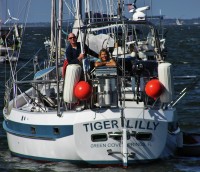
Who: Lilly and Tom Service
Port: Green Cove Springs

